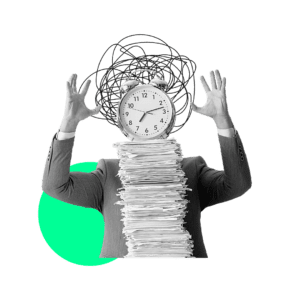Introduction
Facing overdue tax filings and payments? Don’t worry – Oyster Hub has your back from anywhere in Australia.
As a small business owner, staying on top of your tax obligations is crucial to maintaining financial well-being and complying with the law. However, life’s unexpected twists can sometimes lead to falling behind on tax filings and payments.
If you find yourself in this situation, don’t panic – Oyster Hub is here to guide you through the process of catching up on your taxes and getting your financial affairs back on track. This comprehensive guide will walk you through the steps to address back taxes, avoid penalties, and regain control of your financial situation.
Step 1: Assess Your Tax Situation

Before taking any action, it’s crucial to assess the extent of your tax situation. This initial assessment lays the foundation for your journey toward financial recovery.
Here’s a step-by-step guide on how to assess your tax situation thoroughly:
1.1. Gather All Relevant Tax Documents
Begin by collecting all pertinent tax documents. These may include:
- Income Statements: Retrieve your W-2s, 1099s, or any other income-related documents for each tax year in question. These forms will provide details about your earnings.
- Deductions and Expenses: Compile records of any deductions or expenses that may reduce your tax liability, such as receipts for business expenses, medical bills, or charitable contributions.
- Past Tax Returns: If you have filed tax returns in the past, gather copies of these returns. They can provide valuable information about your tax history.
Communication from Tax Authorities: Review any letters or notices received from tax authorities, such as the IRS in the United States or the ATO in Australia. These communications may contain important information about outstanding taxes or penalties.
1.2. Determine How Many Years of Taxes Are Outstanding
Identify the tax years for which you have not filed returns or made payments. Start with the most recent tax year and work backward. Make a list of the outstanding years to create a clear roadmap for addressing each one.
1.3. Calculate the Total Amount Owed, Including Penalties and Interest
For each outstanding tax year, calculate the total amount owed. This should include not only the original tax liability but also any penalties and interest that have accrued. To do this:
- Review your past tax returns to find the original tax liability for each year.
- Research the specific penalties and interest rates that apply in your jurisdiction for late filings and payments. These rates can vary, so ensure you use the correct figures.
- Calculate the penalties and interest for each outstanding year based on the number of months or years since the tax was due.
Total Amount Owed = Original Tax Liability + Penalties + Interest
Once you’ve completed this assessment, you’ll be ready to prioritise your outstanding taxes and take the necessary steps to address them effectively.
Step 2: Prioritise Your Outstanding Taxes
Sorting through multiple years of overdue taxes can be a daunting task. To address this challenge efficiently, it’s essential to prioritise your outstanding taxes. This step will help you allocate your resources effectively and manage your financial obligations.
Here’s how to prioritise your overdue taxes:
2.1. Gather a List of Outstanding Taxes
Begin by creating a comprehensive list of all the outstanding tax years you identified during your initial assessment in Step 1. This list will serve as a reference point as you prioritise and address each tax year.
2.2. Start with the Most Recent Tax Years
Begin by focusing on the most recent tax years first. These recent years are likely to have higher penalties and interest charges compared to older tax years. Addressing them promptly can help prevent the accumulation of additional fees.
2.3. Organise Taxes Chronologically by Due Dates
Once you’ve identified the most recent tax years, organise your outstanding taxes chronologically based on their due dates. This organisation will create a clear roadmap for addressing each tax year in sequence.
Here’s how to do it:
- List the tax years from the most recent to the oldest.
- Next to each tax year, indicate the specific due date. Due dates typically fall on specific dates in the tax year or shortly after the end of the fiscal year.
Example:
- Tax Year 2022: Due on April 15, 2023
- Tax Year 2021: Due on April 15, 2022
- Tax Year 2020: Due on July 15, 2021
By organising your taxes in this manner, you’ll have a clear plan of action.
You can systematically address each tax year, starting with the most recent and working your way back in time.
This approach allows you to manage your outstanding taxes efficiently and reduce the risk of missing important deadlines.
Step 3: File Outstanding Tax Returns
Unfiled tax returns can compound your tax-related issues, so it’s crucial to address them promptly. Filing overdue tax returns is a critical step in resolving your tax situation.
Here’s how to file your outstanding tax returns efficiently:
3.1. Determine Eligibility for Deductions and Credits
In Australia, there are various deductions and credits available that can reduce your tax liability. Evaluate your financial situation to identify deductions and credits that apply to your specific circumstances.
3.2. Choose Your Filing Method
You have options when it comes to filing your overdue tax returns:
- Tax Software: Consider using tax preparation software designed for Australian tax returns. These programs guide you through the process, help you identify applicable deductions and credits, and ensure accurate calculations.
- Tax Professional: If your tax situation is complex or you’re unsure about how to navigate the process, it’s wise to seek the assistance of a qualified tax professional. Tax advisors or accountants have the expertise to handle various tax scenarios and can help you maximise your refunds.
3.3. Complete and Verify Your Tax Returns
Whether you’re using tax software or working with a tax professional, ensure that your tax returns are completed accurately and comprehensively. Double-check all the information provided, including your personal details, income sources, deductions, and credits. Mistakes or omissions can lead to delays and potential audit triggers.
3.4. Submit Your Tax Returns
Once you’ve completed and verified your tax returns, it’s time to submit them to the relevant tax authorities. In Australia, you can typically submit your tax returns electronically through the official government portal or by mailing a physical copy to the appropriate tax office.
Step 4: Address Late Payment Penalties

Late payment penalties and interest can exacerbate your financial challenges when you’re behind on tax filings and payments. It’s crucial to address these penalties to mitigate their impact and regain control of your financial situation.
4.1. Understand Late Payment Penalties
Before taking action, it’s essential to comprehend the penalties associated with late tax payments in your jurisdiction. Different countries and tax authorities have varying penalty structures. In Australia, late payment penalties are typically calculated as a percentage of the unpaid tax, and the rate may increase with the length of the delay.
4.2. Grasp How Interest Accrues
In addition to late payment penalties, interest accrues on the unpaid tax amount over time. It’s important to understand how interest is calculated and added to your tax debt. Interest rates may be fixed or variable, and they can vary based on tax laws and regulations.
Step 5: Explore Tax Debt Resolution Options

In Australia, there are various options available for resolving tax debt, each tailored to different financial situations. Exploring these options is crucial to finding a solution that fits your circumstances and helps you regain financial stability.
5.1. Research Available Options
Start by researching the tax debt resolution options available in Australia. These options may include:
- Offer in Compromise (OIC): This option allows you to negotiate with tax authorities to settle your debt for less than the full amount owed. OIC is typically available when you can demonstrate financial hardship or other valid reasons for not paying the full debt.
- Instalment Agreements: Consider setting up an instalment agreement, as mentioned in Step 4. Installment agreements allow you to pay off your tax debt in manageable monthly payments, preventing the accrual of additional penalties and interest.
- Currently Not Collectible (CNC) Status: If your financial circumstances are dire and you cannot afford to make any payments, you may qualify for Currently Not Collectible status. This temporarily suspends collection efforts until your financial situation improves.
Step 6: Communicate with Tax Authorities
Effective communication with tax authorities is a cornerstone of resolving tax issues when you’re behind on filings and payments.
- It starts with gathering all pertinent information about your tax situation and crafting a clear communication plan.
- Initiating contact promptly with the relevant tax office, such as the Australian Taxation Office (ATO), is crucial, where you can express your intent to address outstanding penalties and interest while demonstrating your commitment to resolving the matter.
- If applicable, don’t hesitate to request penalty abatement, supported by valid reasons, and maintain thorough records of all communication for future reference.
Step 7: Implement Long-Term Tax Planning
To prevent future tax challenges, implement long-term tax planning strategies. Adjust your tax withholding or estimated payments to accurately reflect your income and expenses. Organise your tax-related documents in a dedicated folder to streamline the process for upcoming tax seasons. This proactive approach will help you avoid falling behind on tax filings and payments in the future.
Step 8: Seek Professional Help

Are you feeling overwhelmed with all the information above? Do you still have no clue where to begin? Have you been served an ATO notice? Do not worry, we are here as your comprehensive solution!
Navigating the complexities of tax debt resolution can be daunting, especially when dealing with multiple years of overdue taxes. Consider seeking professional assistance from qualified tax advisors or accountants.
Embark on your journey towards financial recovery today with Oyster Hub as your trusted partner in resolving back taxes and setting the stage for a solid financial foundation. We provide expert guidance tailored to your specific situation, ensuring that you make informed decisions aligned with your financial goals.


















